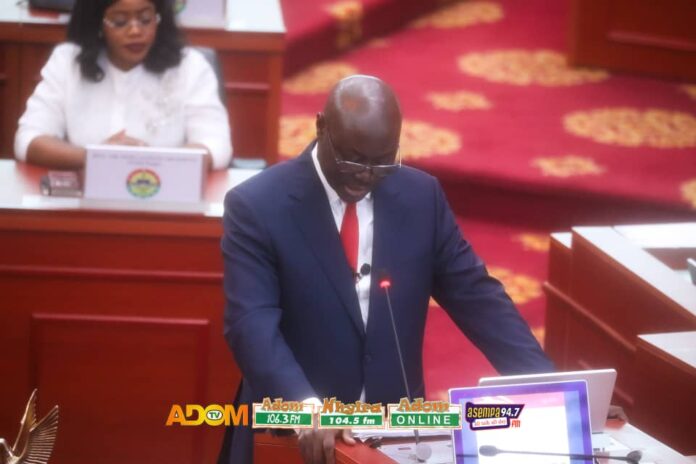The Finance Minister, Dr. Cassiel Ato Forson, has announced that Ghana’s energy sector is showing signs of stability following key reforms under the Energy Sector Recovery Programme (ESRP).
Presenting the 2026 Budget Statement to Parliament on Wednesday, November 13, Dr. Forson noted that chronic inefficiencies—such as poor revenue collection, high system losses, non-cost-reflective tariffs, and state-owned enterprise (SOE) challenges—had contributed to rising shortfalls in the sector.
However, he highlighted that enforcement of the Cash Waterfall Mechanism (CWM) has significantly improved, with monthly declarations increasing from GH¢950 million in 2024 to GH¢1.7 billion by August 2025.
The Minister revealed that the government has renegotiated agreements with nine Independent Power Producers (IPPs)—AKSA, BXC, CENIT, Cenpower, Early Power, Karpower, Meinergy, Sunon Asogli, and Twin City (Amandi)—securing over US$250 million in debt discounts, extending the legacy-debt cut-off to June 2025, and reducing capacity charges for some plants.
To enhance efficiency at the Electricity Company of Ghana (ECG), Cabinet has approved a Private Sector Participation (PSP) strategy to address billing and collection challenges. A Transaction Advisor is expected to be procured by the end of November 2025, with concession contracts targeted for the third quarter of 2026.
Dr. Forson added that the government has agreed on a payment plan with the World Bank to clear gas-related liabilities, paying US$384.6 million between January and August 2025 and reducing drawdowns on Standby Letters of Credit to US$210.5 million, with full restoration targeted by April 2026.
In addition, daily gas deliveries have been increased by 70 million standard cubic feet to reduce dependence on liquid fuels and ensure stable power generation.
Overall, the Finance Minister said Ghana has paid about US$1.5 billion in 2025 to settle renegotiated PPA commitments, reduce IPP arrears, and remain current on energy invoices.
As a result of these interventions, projected energy sector shortfalls for 2025 have dropped from US$2.2 billion to US$1.6 billion, marking a major step toward restoring financial sustainability in the energy sector.

READ ALSO:


